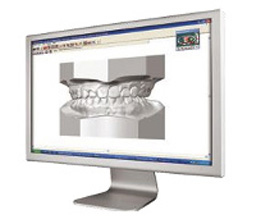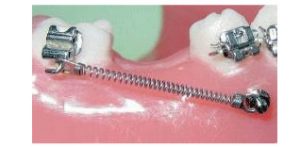At what age is it recommended to start with an orthodontic treatment?
There are interceptive orthodontic treatments (which aim to prevent a problem from growing and triggering other issues) and orthopaedic treatments (which aim to intervene in the growth of the bones that support the teeth), and both start at an early age, usually from the age of 6. Most corrective orthodontic treatments using multibracket appliances start later, around 12 years old, when all the permanent teeth have already erupted.
An orthodontic treatment can be carried out at any age, there is no age limit for correcting a malocclusion (a “bad bite”).
How long does an orthodontic treatment last?
The overall treatment time depends on the problem to be solved, the type of appliances, how well the appliances are taken care of, how fast the teeth move… Generally, it ranges from a few months, 6 to 8 in the easiest cases to 24 or 30 months in the most complicated cases.
Does the treatment hurt?
Usually, the first two or three days after the fitting of the orthodontic appliances the patient might feel pains which cease with analgesics.
In order to avoid mouth ulcers, it is convenient to apply orthodontic wax for the first days in the areas of greatest friction.
During treatment, when the archwires are changed it is common to experience increased teeth sensitivity when biting.
Is there an age limit for Invisible Orthodontics?
There is no age limit for undergoing an orthodontic treatment. The patient could be an adult or a child and it is not conditioned by the seriousness of the issue.
What is the purpose of an orthodontic treatment?
–Correcting teeth malpositions, so that teeth fit correctly and work efficiently without suffering traumas.
–Improving the smile aesthetics.
–Correcting the position of teeth that, as a consequence of the loss of a piece without replacement, have crooked or inclined over time, leaving gaps and hindering a suitable implant or prosthesis placing.
–Facilitating proper hygiene by solving teeth overcrowding, which usually involves a higher plaque accumulation and therefore it poses a higher risk of periodontal disease.
–Improving bone and gum conditions in cases where the teeth problems are insurmountable and they need to be replaced with implants.
In cases where these teeth are placed on areas demanding high aesthetics, the orthodontic treatments enable the movement of the tooth in such a way that it sweeps bone and gum along for a better outcome.
–And many more things…
Can my teeth suffer a wear due to the treatment?
No. An orthodontic treatment does not damage teeth, but bacterial plaque does.
In case that during treatment the patient does not comply with the hygiene rules nor attends the control appointments, there are risks of enamel decalcification, dental caries or gum swelling (gingivitis). That is why we insist and dedicate so much time to the instructions and hygiene check-ups.
When the enamel is already suffering a decalcification before the orthodontic treatment, invisible or lingual orthodontic appliances are especially recommended, as the former facilitate the hygiene and the latter decrease the risk of decalcification.
What are the Invisible Orthodontic Appliances?
Invisible or clear braces are removable orthodontic systems consisting of a series of clear plastic aligners which achieve a sequential movement of the teeth. The best known is the system Invisalign. It is very comfortable, since the patient can remove the aligners when eating or brushing his or her teeth. However, some dental movements are less predictable than with fixed orthodontic appliances.
It is important to consult with a professional who will state whether this is the best type of orthodontics in your case.
What are the lingual orthodontics appliances?
They are fixed appliances (brackets) which are placed in the inner side of the teeth, and therefore they are not seen from the outside.
The system is just as efficient as the conventional appliances and it can solve any problem.






